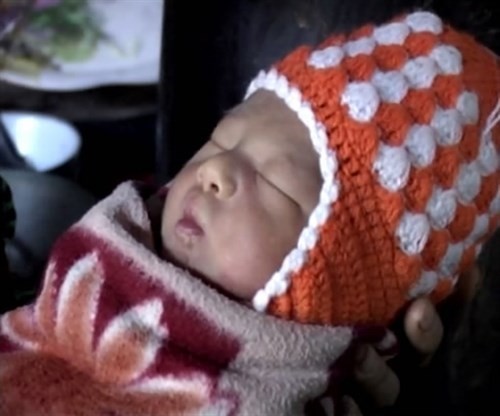(VOVWORLD) - The Mong ethnic minority people in the northern mountain province of Cao Bang consider the naming ceremony for a child to be the starting milestone of a person’s life. The ceremony is carefully organized by the family and the hamlet.
 A naming ceremony for a Mong baby (Photo: Dantocmiennui.vn) A naming ceremony for a Mong baby (Photo: Dantocmiennui.vn) |
The Mong believe that when a child is born, its soul is still wandering somewhere. They organize a ritual to call the soul to the body and give the child a name. The family’s ancestors will bless and protect the child from illness. Hoang Thi Phuong of Bao Lam district, Cao Bang province, said the Mong’s naming ceremony is as important as the full-month ceremony of the Tay and Nung ethnic minorities. Family members from both the father’s and mother’s side of the family and all the neighbors are invited, Phuong said.
“A new-born child must be given a name within 3 days. We invite a shaman to organize a ritual to call the soul to the body. Depending on the family’s circumstances, we prepare an elaborate party or just a simple meal and invite all the relatives and neighbors to come and help us pray for the child’s health.”
The ceremony is usually held in the morning. Hoàng A Tu of Bao Lam districtsays that the family boils a chicken as an offering to the ancestors. Then the shaman conducts the ritual to call the soul. The family places at the main door a tray of offerings which includes a live rooster and a bowl of rice topped with an egg and some incense sticks.
“The child’s name is agreed ahead of the ceremony by the parents and grandparents. If the name is Mi, for example, the shaman says ‘Mi comes home. You have a father and a mother. Don’t wander around. Come home with your parents and grandparents.’ The shaman tosses two yin-yang coins. If both coins land yang side up, it means the ancestors and the child’s soul accept the name and the child’s soul has come home. If one or both coins are yin, the family has to find another name. When the child’s name is accepted, the parents bring an incense urn to the child’s room. The egg and the rooster are cooked and offered to the ancestors again.”
 The shaman performs a naming ceremony for a new born baby. The shaman performs a naming ceremony for a new born baby. |
After the ceremony, the child is officially acknowledged as a family member and blessed by the ancestors and the midwives. The relatives and neighbours give the child gifts of food, rice, and money to wish him or her good health. Then all the participants enjoy a meal together.
Hoang A Tu says the naming ceremonies for a first or a second child differ somewhat. “At the naming ceremony for a first child, the Mong also rename the child’s father and mother. For example, if the father’s name is Pa, he is renamed Hong Pa or Dung Pa. The family prepare a pig and invite relatives and friends to come for a meal. People then start calling the parents by their new names. The naming ceremony for a second child usually involves fewer guests than the ceremony for a first child,” said A Tu.
These days Mong women usually deliver their baby at a hospital rather than at home as they did in the past. The mother and baby remain at the hospital for 5 to 7 days, so the naming ceremony for the baby might not be organized within 3 days. But the Mong people in Cao Bang continue to hold naming ceremonies as an occasion to assemble family members and strengthen community bonds.